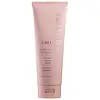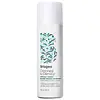What's inside
What's inside
 Key Ingredients
Key Ingredients

 Benefits
Benefits

 Concerns
Concerns

 Ingredients Side-by-side
Ingredients Side-by-side

Water
Skin ConditioningCocamidopropyl Betaine
CleansingSodium Lauroyl Methyl Isethionate
CleansingHeptyl Glucoside
Sodium Methyl Oleoyl Taurate
CleansingSodium Cocoyl Isethionate
CleansingSorbeth-230 Tetraoleate
EmulsifyingPolyquaternium-7
Phenoxyethanol
PreservativeSodium Chloride
MaskingCitrus Aurantium Dulcis Peel Oil
MaskingCaprylyl Glycol
EmollientCitrus Limon Peel Oil
MaskingDecyl Glucoside
CleansingPanthenol
Skin ConditioningHexylene Glycol
EmulsifyingMannitol
HumectantEthylhexylglycerin
Skin ConditioningPhosphatidylcholine
EmulsifyingGlycerin
HumectantPolyquaternium-10
Biotin
AntiseborrhoeicXimenia Americana Seed Oil
EmollientSorbitan Laurate
EmulsifyingPelargonium Graveolens Flower Oil
MaskingSr-(Wasp Spider Polypeptide-1 Oligopeptide-178)
Skin ConditioningAloe Barbadensis Leaf Juice
Skin ConditioningCetyl Alcohol
EmollientSodium PCA
HumectantSodium Lactate
BufferingPotassium Sorbate
PreservativeSodium Benzoate
MaskingArginine
MaskingAspartic Acid
MaskingGlycine
BufferingCitrus Aurantium Bergamia Fruit Oil
MaskingCeramide NP
Skin ConditioningStearamine
Sorbitan Oleate
EmulsifyingXanthan Gum
EmulsifyingAlanine
MaskingSerine
MaskingValine
MaskingThreonine
Isoleucine
Skin ConditioningProline
Skin ConditioningDimyristyl Phosphate
CleansingHistidine
HumectantPhenylalanine
MaskingGlycoproteins
Skin ConditioningOligopeptide-2
Skin ConditioningWater, Cocamidopropyl Betaine, Sodium Lauroyl Methyl Isethionate, Heptyl Glucoside, Sodium Methyl Oleoyl Taurate, Sodium Cocoyl Isethionate, Sorbeth-230 Tetraoleate, Polyquaternium-7, Phenoxyethanol, Sodium Chloride, Citrus Aurantium Dulcis Peel Oil, Caprylyl Glycol, Citrus Limon Peel Oil, Decyl Glucoside, Panthenol, Hexylene Glycol, Mannitol, Ethylhexylglycerin, Phosphatidylcholine, Glycerin, Polyquaternium-10, Biotin, Ximenia Americana Seed Oil, Sorbitan Laurate, Pelargonium Graveolens Flower Oil, Sr-(Wasp Spider Polypeptide-1 Oligopeptide-178), Aloe Barbadensis Leaf Juice, Cetyl Alcohol, Sodium PCA, Sodium Lactate, Potassium Sorbate, Sodium Benzoate, Arginine, Aspartic Acid, Glycine, Citrus Aurantium Bergamia Fruit Oil, Ceramide NP, Stearamine, Sorbitan Oleate, Xanthan Gum, Alanine, Serine, Valine, Threonine, Isoleucine, Proline, Dimyristyl Phosphate, Histidine, Phenylalanine, Glycoproteins, Oligopeptide-2
Water
Skin ConditioningCetyl Alcohol
EmollientStearyl Alcohol
EmollientBrassica Alcohol
EmollientPropanediol
SolventIsopropyl Myristate
EmollientCopper Tripeptide-34
Skin ConditioningCoffea Arabica Seed Oil
MaskingTocopheryl Acetate
AntioxidantPanax Ginseng Root Extract
EmollientCaffeine
Skin ConditioningBiotin
AntiseborrhoeicCetyl Esters
EmollientCamellia Sinensis Leaf Extract
AntimicrobialBrassicyl Isoleucinate Esylate
Emulsion StabilisingCetrimonium Chloride
AntimicrobialGuar Hydroxypropyltrimonium Chloride
Skin ConditioningGlycerin
HumectantLauryl Pyrrolidone
CleansingAloe Barbadensis Leaf Juice
Skin ConditioningUbiquinone
AntioxidantLindera Strychnifolia Root Extract
Skin ConditioningLeuconostoc/Radish Root Ferment Filtrate
AntimicrobialGlycine
BufferingLarix Europaea Wood Extract
HumectantSodium Metabisulfite
AntioxidantZinc Chloride
AntimicrobialCitric Acid
BufferingParfum
MaskingCaprylhydroxamic Acid
Benzyl Alcohol
PerfumingWater, Cetyl Alcohol, Stearyl Alcohol, Brassica Alcohol, Propanediol, Isopropyl Myristate, Copper Tripeptide-34, Coffea Arabica Seed Oil, Tocopheryl Acetate, Panax Ginseng Root Extract, Caffeine, Biotin, Cetyl Esters, Camellia Sinensis Leaf Extract, Brassicyl Isoleucinate Esylate, Cetrimonium Chloride, Guar Hydroxypropyltrimonium Chloride, Glycerin, Lauryl Pyrrolidone, Aloe Barbadensis Leaf Juice, Ubiquinone, Lindera Strychnifolia Root Extract, Leuconostoc/Radish Root Ferment Filtrate, Glycine, Larix Europaea Wood Extract, Sodium Metabisulfite, Zinc Chloride, Citric Acid, Parfum, Caprylhydroxamic Acid, Benzyl Alcohol
Ingredients Explained
These ingredients are found in both products.
Ingredients higher up in an ingredient list are typically present in a larger amount.
Aloe Barbadensis Leaf Juice comes from leaves of the aloe plant. Aloe Barbadensis Leaf Juice is best known for helping to soothe sunburns. It is also anti-inflammatory, moisturizing, antiseptic, and can help heal wounds.
Aloe is packed with good stuff including Vitamins A, C, and E. These vitamins are antioxidants, which help fight free-radicals and the damage they may cause. Free-radicals are molecules that may damage your skin cells, such as pollution.
Aloe Barbadensis Leaf Juice also contains sugars. These sugars come in the form of monosaccharides and polysaccharides, folic acid, and choline. These sugars are able to help bind moisture to skin.
It also contains minerals such as calcium, 12 anthraquinones, fatty acids, amino acids, and Vitamin B12.
Learn more about Aloe Barbadensis Leaf JuiceBiotin is a B vitamin that is naturally produced by our bodies. It is also called Vitamin H.
Our bodies use biotin in the metabolism process. It also helps our bodies use enzymes and move nutrients around. A biotin deficiency can lead to brittle hair and nails.
More research is needed on applying biotin topically. However, taking biotin orally has been shown to help nourish the skin, hair, and nails. They play a role in forming skin-hydrating fatty acids.
Biotin is water-soluble. It can be found in foods such as fish, eggs, dairy, nuts, and meat. Vitamin H stands for "haar" and "haut". These are the German words for hair and skin.
Learn more about BiotinCetyl Alcohol is a fatty alcohol. Fatty Alcohols are most often used as an emollient or to thicken a product.
Its main roles are:
Though it has "alcohol" in the name, it is not related to denatured alcohol or ethyl alcohol.
The FDA allows products labeled "alcohol-free" to have fatty alcohols.
Learn more about Cetyl AlcoholGlycerin is already naturally found in your skin. It helps moisturize and protect your skin.
A study from 2016 found glycerin to be more effective as a humectant than AHAs and hyaluronic acid.
As a humectant, it helps the skin stay hydrated by pulling moisture to your skin. The low molecular weight of glycerin allows it to pull moisture into the deeper layers of your skin.
Hydrated skin improves your skin barrier; Your skin barrier helps protect against irritants and bacteria.
Glycerin has also been found to have antimicrobial and antiviral properties. Due to these properties, glycerin is often used in wound and burn treatments.
In cosmetics, glycerin is usually derived from plants such as soybean or palm. However, it can also be sourced from animals, such as tallow or animal fat.
This ingredient is organic, colorless, odorless, and non-toxic.
Glycerin is the name for this ingredient in American English. British English uses Glycerol/Glycerine.
Learn more about GlycerinThis ingredient is an amino acid that helps build proteins and moisturizes skin. It is already present in our skin as our bodies produce them naturally.
Glycine already plays a role in helping keep our skin moisturized as amino acids transport moisture throughout our skin.
As collagen is made up of glycine and other amino acids, it is believed glycine may help our skin produce more collagen.
Learn more about GlycineWater. It's the most common cosmetic ingredient of all. You'll usually see it at the top of ingredient lists, meaning that it makes up the largest part of the product.
So why is it so popular? Water most often acts as a solvent - this means that it helps dissolve other ingredients into the formulation.
You'll also recognize water as that liquid we all need to stay alive. If you see this, drink a glass of water. Stay hydrated!
Learn more about Water